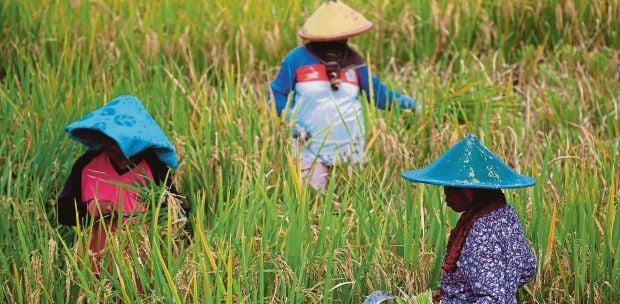RICE is a staple food for many. In Kelantan, we just cannot live without at least one rice meal a day. The state is known for its many rice specialties, such as nasi dagang, nasi kerabu, nasi berlauk, and more.
It was no surprise that the recent hike in world rice prices caused a stir in Kelantan. Changing global weather patterns, attributed to the climate crisis, has wreaked havoc on rice harvests.
Inadequate rain or rainfall arriving at the wrong time has created a major upset among rice growers. Yields in many of the major producer countries have been badly affected.
The reduced harvests have forced many major rice producing nations to cut exports, including India, the world's largest exporter of white rice. Their priority is domestic needs.
Since world demand is high, the inevitable result is the rise in prices to a level that affects affordability, especially for the poor. As a net importer of rice, we will feel the effects of the crisis.
It has been reported that rice prices surged to their highest in almost 12 years. The Food and Agriculture Organisation All Rice Price Index for July rose 2.8 per cent to 129.7 points. The figure is up 19.7 per cent compared with a year ago, and the highest nominal value since September 2011.
The sharpest increase in price came from Thailand. The report stated that concerns over the potential impacts of El Nino on production among some suppliers further underpinned price hikes, as did rain-induced interruptions and quality variability in Vietnam's ongoing summer-autumn harvest.
El Nino is a climate phenomenon marked by extreme temperatures and weather conditions that could interrupt lives and livelihoods.
India's ban on exports of non-basmati white rice on July 20 come as the government seeks to cap soaring food prices at home, and ensure enough affordable supplies domestically. The country accounts for more than 40 per cent of the global rice trade.
Even if it affects a portion of India's overall rice shipments, FAO noted that India's export restriction raises substantial food security concerns for a large swathe of the world population. El Nino could further exacerbate risks on global production.
Thailand, the world's second largest exporter of rice, is now encouraging farmers to plant less of the crop in a bid to save water as a result of low rainfall. The irony of it all is that most rice farmers are poor.
The high world price does not trickle down much to them. Such economic gains mainly go to the processors and the people involved in logistics. It is a real dilemma.
Experts watching such a dichotomy have long proposed the need to structurally reform the sector. Much of these warnings have fallen on deaf ears.
One suggestion is rice farmers form cooperatives and undertake the milling and marketing themselves. In this age of e-commerce, that is not impossible. Despite many years of research and development to improve rice yields, Malaysia's national average harvest remains low and stagnating.
There are many reasons for this. One is the low-quality planting materials used by farmers. The supply of high-quality planting materials has not been properly supervised.
Next, the fertilisation of the crops has been largely compromised. The common explanation is that the government-subsidised fertilisers have not been properly applied. There have been claims of fertilisers being sold on the black market.
Farmers have also complained of poor irrigation infrastructure. Many blame the poor adoption of the latest technology for the low yields.
It is time to address this supply chain deficiency. We cannot forever blame the climate. Adaptation measures must be developed to help farmers cope with climate related problems.
More importantly, there should be serious study on the compensation received at each level of the value chain. There should be structural reform to put in place a more equitable distribution of the returns.
Now, it is lopsided. Processors, distributors and marketers are better compensated than farmers. We must not forget that farmers form the most critical part of the value chain. No farmers, no rice industry.
* The writer is a professor at the Tan Sri Omar Centre for STI Policy, UCSI University






